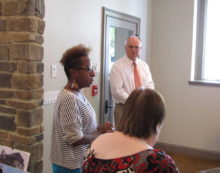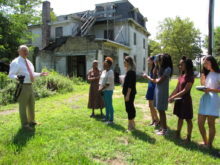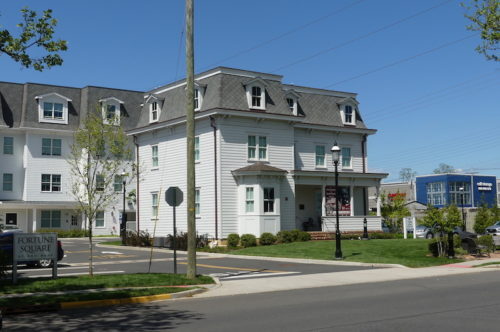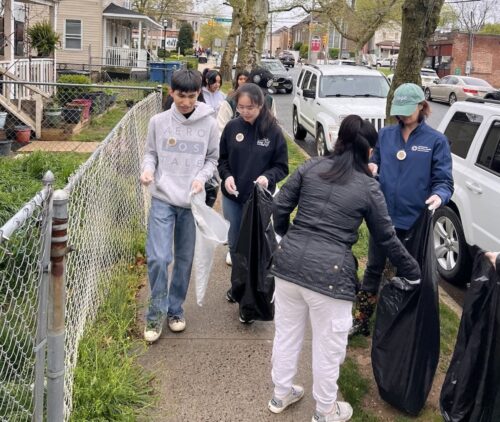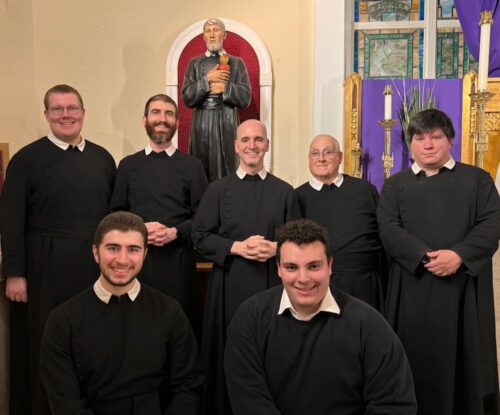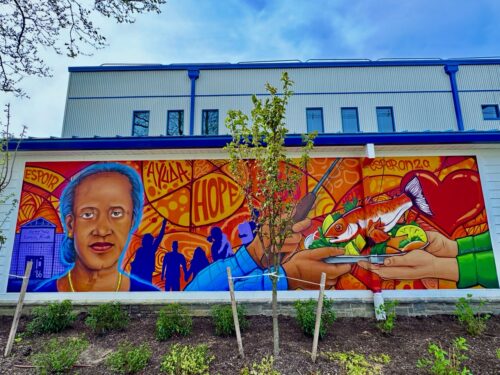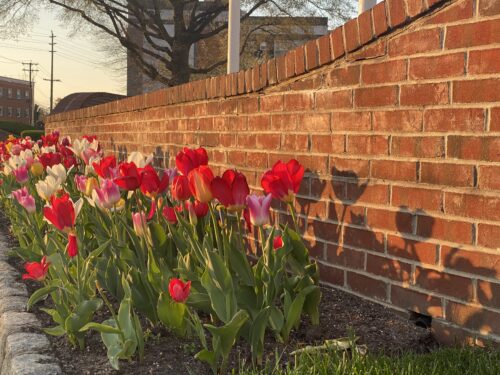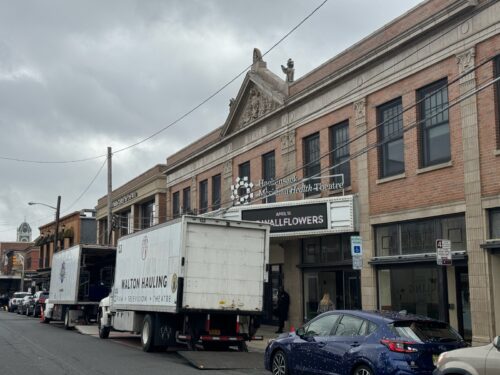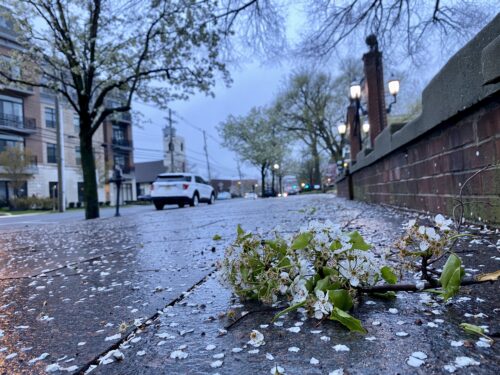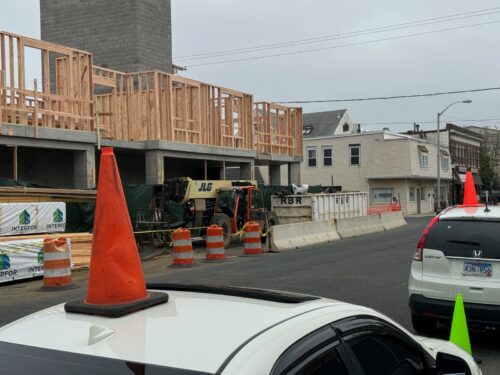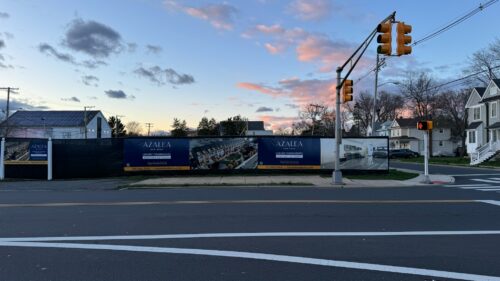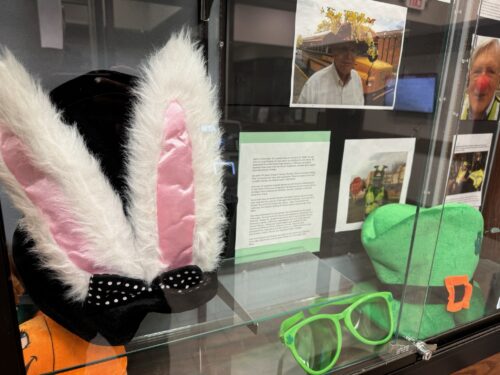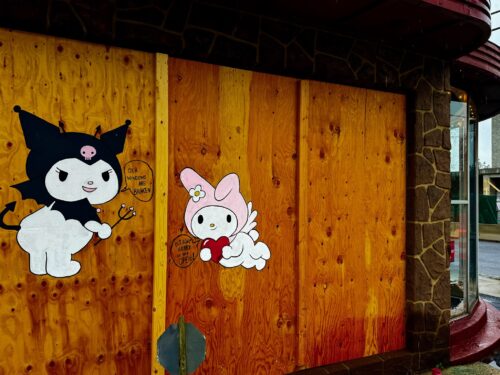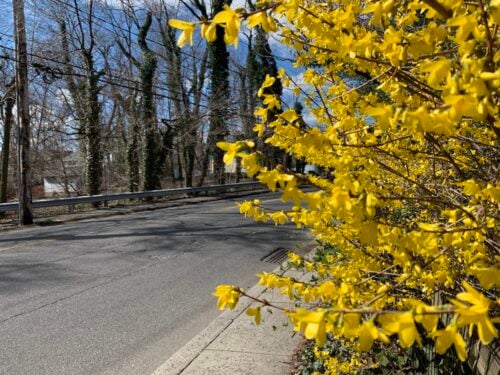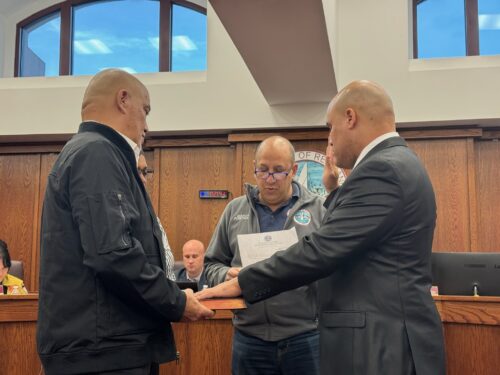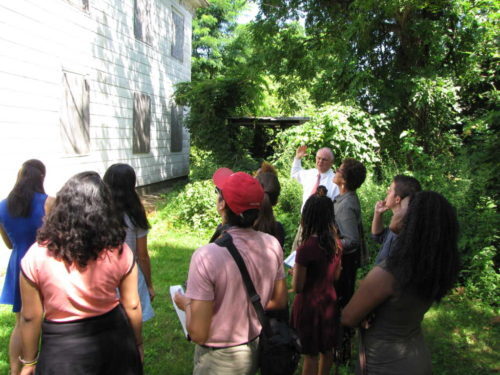
By JOHN T. WARD
Less than a week after the Red Bank zoning board approved a plan to save it, the still-crumbling T. Thomas Fortune House offered a preview Wednesday of its anticipated role: as a cultural and educational center.
About a dozen high school students from around New Jersey took an exterior tour of the onetime home of pioneering civil rights journalist, who lived in it for a decade starting in 1901 and entertained the leading lights of black culture there. In the process, they also got a lesson in how the interests of preservationists and profit-minded developers might converge.

The students, participating in the weeklong Hugh N. Boyd Journalism Diversity Workshop at Rutgers in New Brunswick, assembled first at the offices of borough-based homebuilder Roger Mumford, who plans to restore the Fortune residence and create 31 apartments on the one-acre property.
Make no mistake about it, Mumford told the students: he aims to make money on the deal. But the project, which he called the “most exciting” of his career, was rooted first and foremost in a desire to preserve a historic treasure, he said.
Fortune, who was born into slavery and later became a relentless campaigner for civil rights, “may be the most famous African-American that virtually nobody’e ever heard of,” Mumford told the students.
A longtime devotee of black history whose office is just around the corner from the Drs. James Parker house, Mumford he said he’d never heard of Fortune until news coverage about efforts to save it began to appear locally in recent years.
Likewise, former journalist Gilda Rogers, who now co-chairs the nonprofit T. Thomas Fortune Project, said she was unaware of Fortune before 2000, when a Newark newspaper she worked for won a prize named in his honor, and didn’t learn until 2006 that he had lived in Red Bank, when she stumbled on the information while doing thesis research at the Schomburg Center for Research in Black Culture in Harlem.
“I was amazed at his contribution to our society,” she said.
At that point, she became involved with an effort launched that year by Ed Zipprich, now a councilman, and George Bowden to save the house from demolition.
But Mumford’s path didn’t cross with Rogers’ until last November, after the failure of an effort by the Fortune Project to have the New Jersey Department of Environmental Protection buy the house, which is listed on the on the National Register of Historic Places, using Green Acres funds. Members of the Vaccarelli family, whose ancestors had bought the property in 1918, had rejected the state’s offer, he said.
At that point, Fortune Project volunteers “felt we’d exhausted everything we could do to make this work,” Rogers told the students.
Shortly thereafter, though, Mumford — who had never met Rogers — said he got a call from the owners, who wanted him to buy the site. They were determined, he said, to knock down the house, so that whoever bought it would not be impeded in their development plans.
Mumford declined the offer, he said, but the dawning realization as the meeting wound down that the house was doomed led him to seek a meeting with Rogers, who came to his office two days later.
There, he said, he and Rogers spoke of their shared passion for black history, a discussion sparked when Mumford referred to Isabel Wilkerson’s Pulitzer-prize winning book, “The Warmth of Other Suns,” about the mass-migration of African-Americans from the south to northern and western destinations. It turned out they’d both loved the account, which Mumford calls “one of the three or four best books I’ve ever read.”
“Gilda asked if I was for real,” Mumford told the students. “I said, ‘I didn’t get up early this morning and read a 600-page book” to impress her.
Mumford then outlined a rough idea of how their interests might best be served, and said Rogers gave him a concept drawing of what the restored house might look like. He in turn used the image to create a crude three-dimensional display of what the site might look like if apartments that were similar in design to the Second Empire-style residence were built behind it.
“I thought it was an amazing idea,” Rogers said. “I was at a loss for words.”
Mumford told redbankgreen that he then agreed to meet the Vaccarellis asking price, lest the property slip away, provided they gave him time to work up engineering and architectural plans and shepherd them through the zoning approval process.
The Vaccarellis, he said, gave him eight months.
His plan, approved after a single hearing by the zoning board last Thursday, is to restore the house, which is now so deteriorated that it cannot be safely entered, using historically appropriate materials, a project estimated to cost $2.5 million or more, including the acquisition, and then donate it to the Fortune project for $1. He would then build 31 approved apartments at the rear of the site.
Rogers said the partnership is proof that good things can happen when people persevere in following their passions and “community-minded people come together.”
Jim Vaccarelli, who owns the site with his sister-in-law, Assunta Vaccarelli, declined comment when contacted by redbankgreen on Thursday.
Among the students on the tour was Suubi (pronounced Su-vee) Mondesir, a rising junior at Red Bank Regional who attended last week’s zoning board hearing, at which her mother, Birgit, made an impassioned plea in support of Mumford’s plan. Suubi said she has already been offered an internship by the Fortune Project to handle social media outreach on its behalf.
Mumford said his acquisition of the site is pending final approval of the zoning board resolution.


